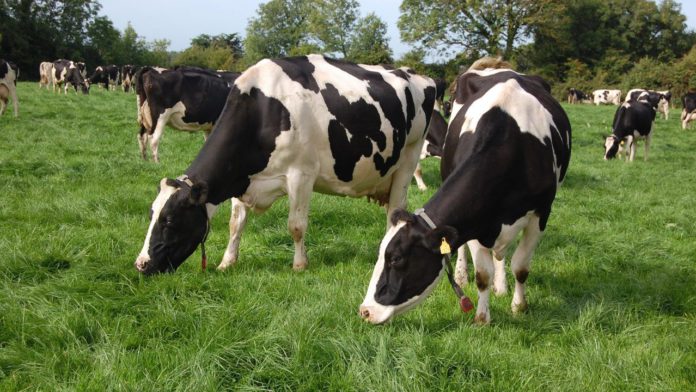According to the latest data from BCMS, the UK milking herd has continued to decrease in numbers.
Charlie Reeve, analyst (livestock) at AHDH, said that of April 1st, the GB milking herd totalled 1.67 million head of cattle, 32,000 head (2%) lower than at the same time last year.
He said the milking herd has been on “a steady downwards trajectory for several years now”.
By contrast, youngstock (under 2-years-old) numbers have been increasing. As of April 1st, youngstock numbers totalled 902,000, an increase of 32,000 head (4%) on the same time last year.
“This suggests that as more youngstock come through into the milking herd, the total GB milking herd may begin to stabilise and potentially even increase in size if these cattle are retained,” he commented.
“Splitting the female dairy herd by age group, there were year-on-year drops in most age groups.”
He highlighted that the largest decline in numbers occurred with the 4-6-year group, with a reduction of 22,000 head (4%) on the previous year.
Supplies relatively unchanged
Meanwhile, according to Chris Gooderham, head of market specialists – dairy and livestock, the volume of milk coming off English dairy farms has “remained relatively unchanged” for the last four years.
In 2020/21, it is estimated at 9.0 billion litres of milk – just 0.5% lower than the year before.
“The slight drop was a result of a 1.7% reduction in the size of the milking herd, partially offset by an estimated 1.2% lift in milk yields.”
“The English dairy herd continues to contract, having fallen by 4.3% since 2015. Over the same period, the Scottish herd size has fallen by only 1.6%. Wales has increased by 2.4%.”
“For the most part, though, the drop in cow numbers in England is being offset by increasing average yields.”
“While milk off farms has remained stable, the volume of milk processed in the country continues to increase.”
“Our latest estimate suggests the deficit in milk volumes available for processing increased by 7% to 1.25 billion litres in 2020/21. That is more than 40% higher than it was back in 2017/18.”
Long-term trends in consumption and processing show an increase in the amount of milk used to make cheese and yoghurt and a reduction in the volume used for liquid milk.
In England, he noted, the main cheese manufacturing sites continue to expand. “However, to maintain, or grow, their share of the domestic market, they need to remain competitive with imports,” Gooderham concluded.





